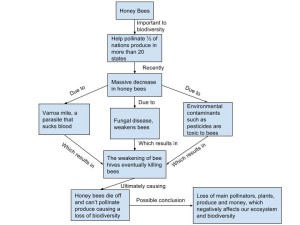1) As discussed in Module 10, species are becoming endangered daily due to biodiversity threats and changes. Using a credible source, choose one species and within 250-300 words explain why that species is threatened or endangered? If that species were to become extinct, how would that affect biodiversity? Make sure to incorporate different concepts mentioned throughout the module in your response.
When looking up threatened species, so many different types appeared online, however, I am going to focus on Pacific Salmon. This species interests me because I personally love to eat salmon and reading about the endangerment of salmon really makes me think twice about my own actions. When salmon are first born, they travel from freshwater rivers and lakes to the sea. We all know how popular Salmon is among humans and animals. It is sold at restaurants, at grocery stores, eaten by indigenous people and consumed by all types of other animals. Therefore, salmon plays a vital role within freshwater and terrestrial ecosystems. Some threats that are affecting salmon are from illegal poaching, habitat destruction, different developmental activities, unregulated over harvesting and climate change. Since people constantly consume salmon and our population is rapidly growing, fisheries are over harvesting, therefore killing more and more salmon. Meaning that as humans are killing lots of salmon, other animals are also eating salmon and environmental changes are causing salmon to die. It is undeniable that the salmon population will soon go extinct if we keep up this mass killing of salmon. If salmon were to go extinct, not only would humans and animals diets change, but also some animals wouldn’t receive appropriate nutrition. Secondly, salmon are a part of the food chain, meaning that other animals would suffer from either a lack of food or they may rapidly populate because they aren’t being eaten. Therefore if salmon were to go extinct, not only would that affect us anthropocentrically, because our economy would decrease and we’d lose food options, but ecocentrically the environment would not be healthy. This can exceed resilience, ultimately disturbing our ecosystem and biodiversity.
“Pacific Salmon.” WorldWildlife.org. World Wildlife Fund. Web. 12 Apr. 2016.
2) During this module, we read an article about honeybees and the colony collapse disease. Create a system diagram representing colony collapse of honeybees and its affect on biodiversity. Be sure to include at least 5 components on the system diagram.
3) In this module, we have read about how rapidly biodiversity is decreasing due to different human-environmental threats. Imagine we are now in the year 2025, do you still think the decline of biodiversity will be an issue? Please explain why or why not using 150-200 words.
During this module, we read about how the rate of extinction is increasing because of an increase in human population, consumption levels and mobility along with habitat loss, invasive species, pollution and over harvesting. Since our population is rapidly growing I think sustaining biodiversity is still going to be an issue in 2025. Although through conservation triage and IUCN protected area categories we are trying to maintain biodiversity, as our population grows we are only going to need more and more resources. Thus meaning that we will rely on expanding industries or using even more of our natural resources to attain these necessities. Unfortunately, this is what leads to a loss of biodiversity, which can cause our ecosystem to collapse. Hopefully at this point in time, we will have more beneficial alternatives for human-environmental activities that will help keep the richness and variation of living organisms. But at the rate we’re at, our population growth along with climate change, deforestation and pollution will only keep increasing causing a loss of biodiversity.


Hi Caren. I enjoyed reading your assignment and response, and learned a lot in the process! Your assignment included a wide range of topics, which proved to be interesting and informative especially with the system diagram for the bees. I like the question about thinking into the future because it forces the student to consider their actions and the potential resulting problems. Overall, this is a good assignment for a biodiversity lesson. If you would like to check out my post, you can find it here: http://geog030.dutton.psu.edu/2016/04/12/biodiversity-in-the-national-parks/